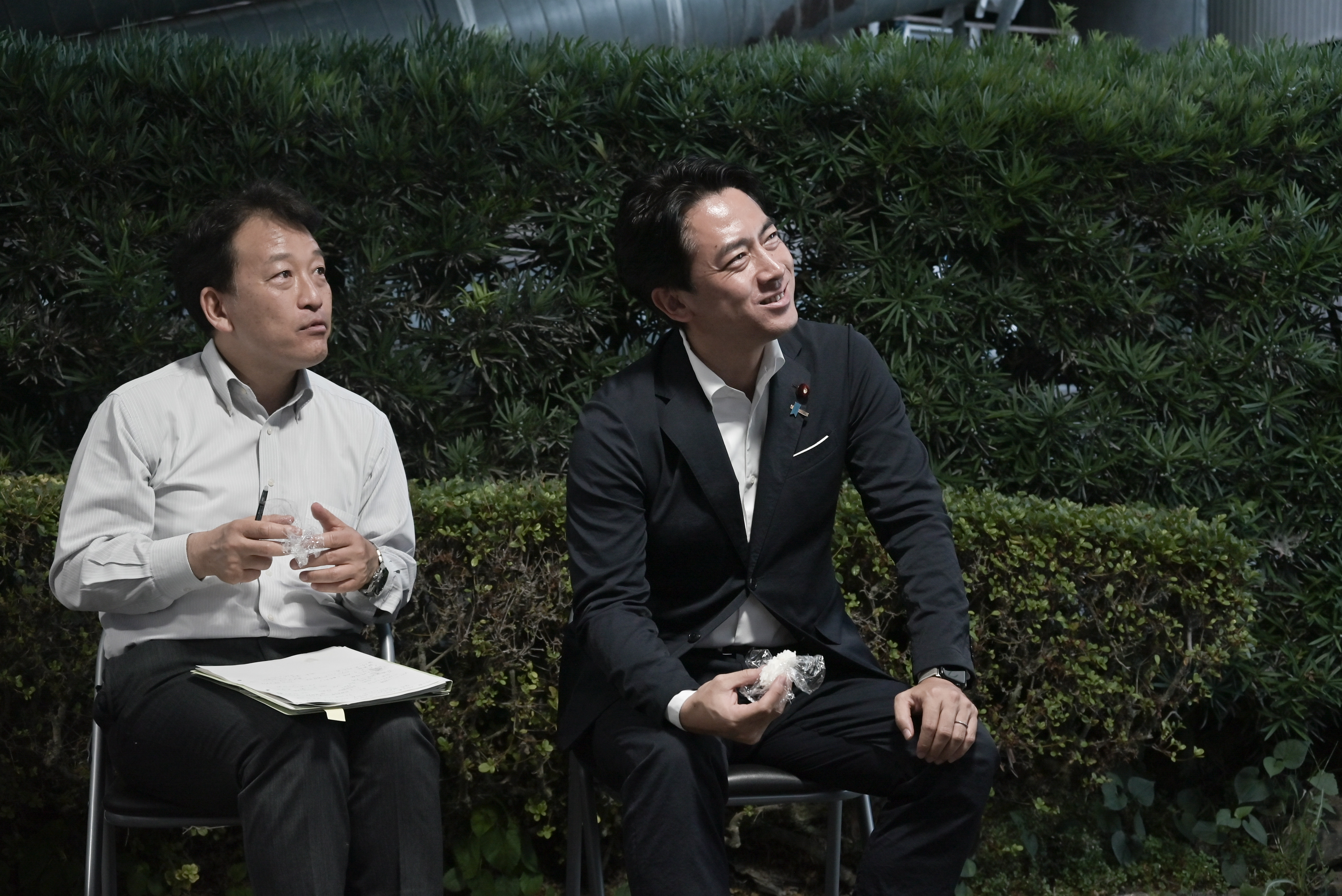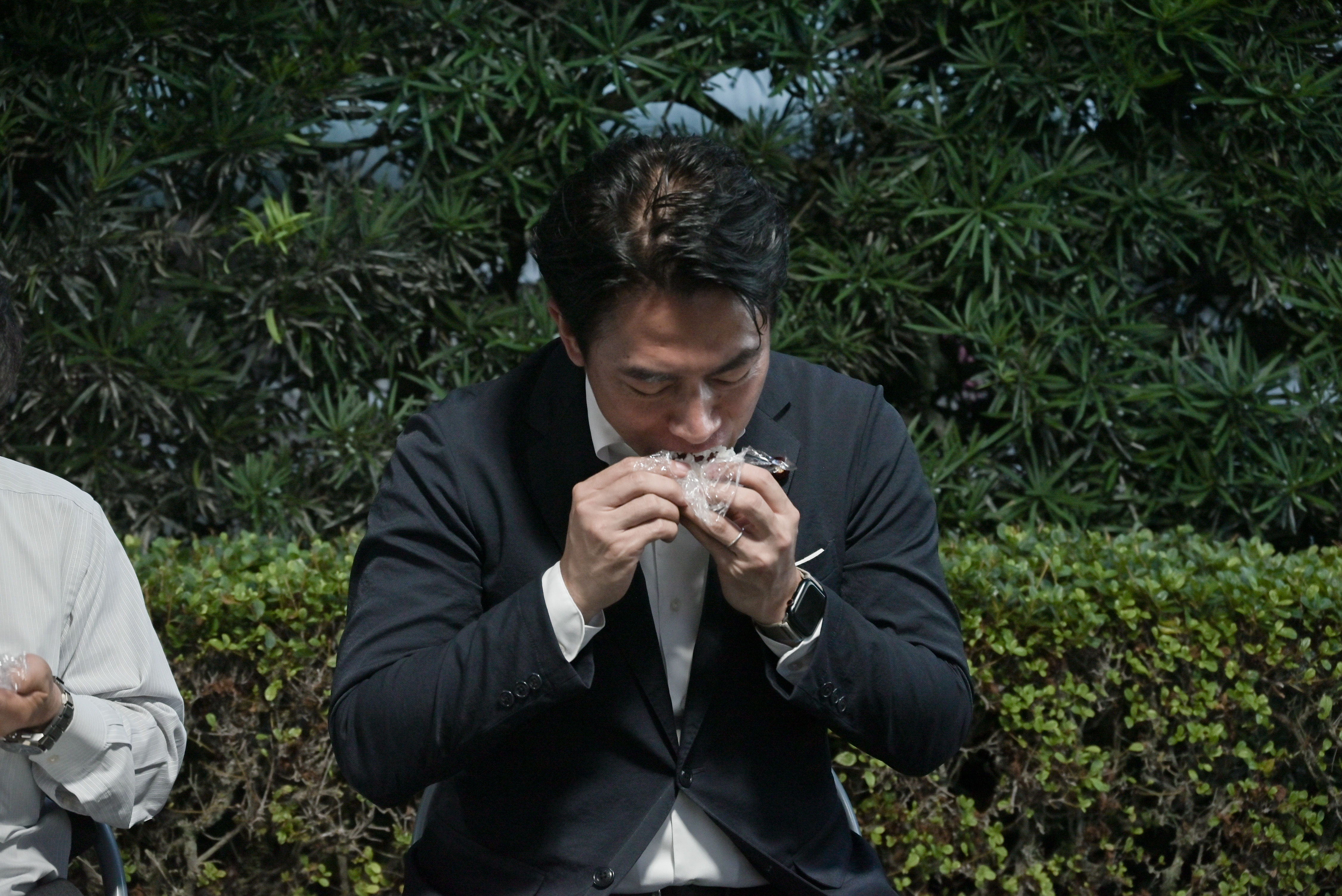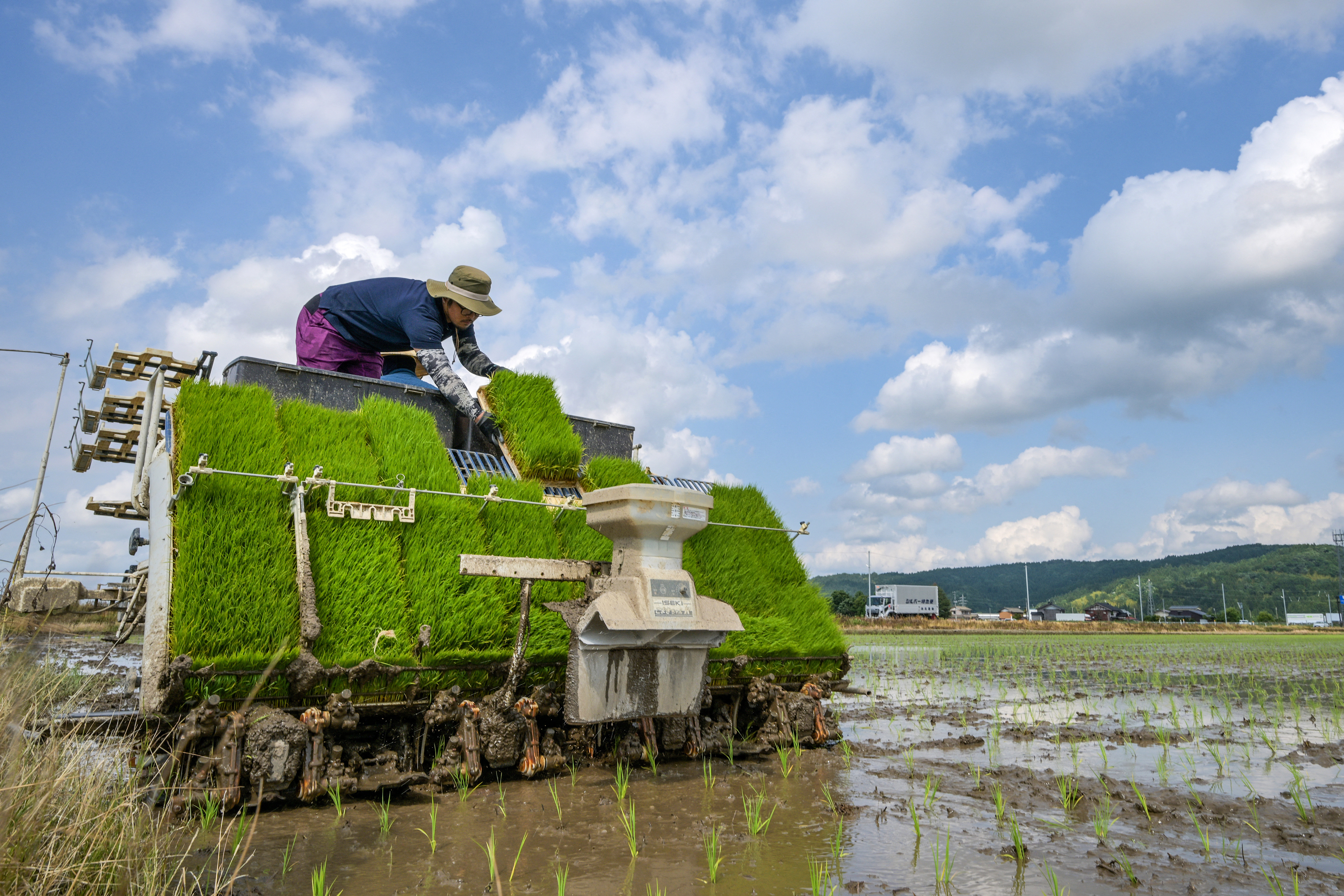How Rice Could Decide Japan’s Next Election

Whether it’s posting pictures of him eating gyudon (beef bowl) between meetings or holding rice balls at campaign stops, Shinjiro Koizumi has worked hard to portray himself as a regular Tokyoite.
The son of former Prime Minister Junichiro Koizumi, he took over the agriculture portfolio two months ago following the resignation of Taku Eto, who sparked outrage by claiming he had never bought rice because he was gifted it by political supporters. Koizumi’s mandate: ease a domestic rice shortage that had sent prices soaring.
[time-brightcove not-tgx=”true”]But the challenge is political as much as agricultural. Koizumi must walk a fine line between lowering grocery prices for urban consumers—many of whom are abandoning the ruling Liberal Democratic Party (LDP)—and maintaining the support of rural rice farmers, a group long central to the LDP’s base.
With upper house elections looming Sunday, that balancing act could determine the government’s fate. Polls suggest that the LDP’s ruling coalition (with Komeito) is likely to lose its majority. That would be a major blow for Prime Minister Shigeru Ishiba, especially after the party lost control of the more powerful lower house last October.

The LDP faces the prospect of expanding its coalition, while the party has been frugal in its goals, wanting just to keep losses down to 16 seats. (The LDP currently holds 52 seats, and, with its coalition partner, needs to retain 50 seats out of the 125 up for election in order to defend its majority.) A bigger loss would also not bode well for Prime Minister Shigeru Ishiba, who may be expected to step down.
It would also push Japan into political turmoil less than two weeks to negotiate a trade deal with the U.S. before Aug. 1, when President Donald Trump’s threatened tariffs are set to kick in.
Read More: Why Rice Is a Sticking Point in U.S.-Japan Trade Talks
Koizumi’s move signals a shift for LDP towards urban consumers
Soon after Koizumi’s appointment, bags of government-stockpiled rice were on grocery store shelves and the price of a 5-kilogram bag of rice had come down from around ¥4,300 to ¥3,500.
It is a stark contrast from his predecessor’s approach, which involved the gradual release of rice stockpiles at a rate that frustrated Japanese consumers. The country’s rice market was partially liberalized in 1995—prior to that, prices were entirely set by the Japanese government.
Since then, the market is determined by supply and demand, but the government artificially limits supply to indirectly ensure that rice prices don’t fall too much, including by providing subsidies to farms to reduce the amount of acreage used for rice production and instead use it to produce other crops. Rice imports above a certain quota are also tariffed highly—much to the ire of Trump—while imported rice mostly gets stockpiled.
But a combination of the government limiting rice production, Japanese diets expanding to include other staples, and extreme weather affecting yields has led farmers to produce less rice over time. That’s since led to a rice shortage and rice prices surging.
Many consumers have long been willing to pay a premium in order to support domestic farmers, Professor of Economics at Tokyo’s Gakushuin University Hiroshi Mukunoki tells TIME. He adds that there is a “widespread belief” that Japanese rice is of a higher quality. But “the recent surge in rice prices may have tested that tolerance, making the issue more politically salient,” he says.
“Koizumi successfully made the rice price a non-issue,” says Tatsuo Hatta, president of the Asia Growth Research Institute.
The main reason for protecting domestic rice is food security, says Hatta. But the fact that consumers have found themselves struggling to afford a basic staple of the Japanese diet has called that premise into question. Moreover, Hatta says food security can be maintained by stockpiling more imported rice and incentivizing Japanese farmers to produce more, not less.
Hanno Jentzsch, an associate professor at the University of Vienna, tells TIME that Koizumi’s move signals that the LDP is ready and willing to meet consumers’ needs.
“Making him agricultural minister could be seen as a strategic political move to signal to consumers that now somebody is at the top who has their interests in mind.” Jentzsch says. “The LDP is not just the party of rural Japan anymore, it is a party that needs urban voters.”
Gut issues are top of mind for many voters, says Jeff Kingston, a professor of history and Asian studies at Temple University in Japan.
“Inflation is a huge issue here. Rice prices have doubled since last year. Gasoline prices are sky high. So households are feeling the pinch,” Kingston says, adding that largely stagnant wages only add to that pressure. “I think there’s a lot of grumbling: What about my pension? What about medical care? What about corruption in the party? Weren’t you going to root it out, and then you just sort of did nothing?”
But the move also risks alienating Japan’s rural voters, especially small rice farmers whose livelihoods depend on government protections of the domestic rice market.
“Koizumi has a certain image, and that image is that he is not a friend of the agricultural lobby. Much to the contrary, he is, you could say, an adversary,” says Hanno Jentzsch, an associate professor at the University of Vienna.
Declining influence of farm vote
Virtually every farmer in Japan is a member of the Japan Agricultural Cooperatives (JA), an association started by the government to act as a regulatory body but also lobbies for farmers’ interests. The farm vote as a result has historically been well-organized by JA to support LDP rural candidates, Jentzsch tells TIME.
“For the LDP, this is a difficult situation, because they need to bind urban voters, but at the same time especially candidates running in rural districts are still very dependent on the farm vote,” says Jentzsch. “It’s a gamble,” he adds.
Koizumi is aware of that. He’s tried to convince Japanese rice farmers that he is on their side, meeting with farmers in their fields in different prefectures. Speaking to a crowd of 1,500 people, he said, “I am sure we can achieve both: consumers will be able to buy rice without any worry, while rice farmers will be able to secure a [stable] income and increase production.”
He added: “Some say higher prices would have been good for farmers, but is that really so? If consumers stop eating rice because it’s expensive, is that really in the interest of rice farmers?”
But Kozuimi’s attempts to level with farmers hasn’t always hit home, especially for farmers who have seen a boost in income thanks to higher prices for the first time in a long time. “What I’ve felt most since the start of the campaign is the intensity of the farmers’ anger. They come to me and ask me if there’s anything I can do with Koizumi,” said incumbent Michiya Haga, who is running as an independent, at a rally in Yamagata prefecture earlier this month.
At the same time, the political power of the farm vote has waned over the years, especially with Japan’s aging population, says Hatta. Japan’s farming population has shrunk around 60% since 1985, while the average age of its farmers has steadily gone up.
Even so, Mukunoki says, the farm vote “still matters, especially in constituencies with strong agricultural interests.”
“Time and time again, especially in Upper House elections, we see that it can become important for candidates in tight races,” says Jentzsch. That’s particularly true in less populated rural districts, where candidates are contesting just one seat. “The relatively well-organized farm vote can make or break these races,” he says.
On top of that, rural votes can carry twice the weight of urban votes, says Mukunoki, which gives rural areas “significant electoral power.” Opposition parties like far-right Sanseito have moved to covet the farm vote in light of Kozuimi’s measures, although the LDP is still ahead in polls.
Trump tariff threats add more pressure to already strained system
Trump threatened Japan with a 25% tariff that will take effect Aug. 1, after earlier suggesting he could make Japan “pay 30%, 35%, or whatever the number is that we determine.” Trump has also been unwilling to budge on a 25% tariff on autos and auto parts and a 50% tariff on metals, which would hurt some of Japan’s key exports.
Whatever the new makeup of Japan’s upper house come Sunday, its government will have a runway of less than two weeks to try to forge a better deal with the U.S.
But access to Japan’s rice market—alongside Japan’s concerns around auto tariffs and demands that Japan import more American oil—has become a sticking point in trade talks between the U.S. and Japan.
Trump has in recent months railed against Japan’s rice protections. Japan imports 770,000 metric tons of rice tariff-free every year, around half of which comes from the U.S. Above that quota, Japan tariffs foreign rice at ¥341 (about $2.30) per kilogram, which works out to a tariff of around 227% according to a calculation by the Japan Times. Trump officials have suggested that Japan tariffs rice at 700%, a figure that likely comes from a 2005 tariff rate of around 778%.
“To show people how spoiled Countries have become with respect to the United States of America, and I have great respect for Japan, they won’t take our RICE, and yet they have a massive rice shortage,” Trump posted on Truth Social on June 30. “In other words, we’ll just be sending them a letter, and we love having them as a Trading Partner for many years to come.”
Koizumi’s emergency measures have to some extent signalled a receptiveness to opening up Japan’s rice market, a topic previously politically taboo.
“Koizumi has at least opened the possibility that imports can be used to reduce the rice price and stabilize supply,” says Jentzsch, although he is skeptical that Japan’s government would be willing to liberalize its market to the extent that Trump probably wants to see. “This is a radical step that I do not see coming yet,” he says.
Mukunoki agrees: “Liberalizing Japan’s rice market remains politically sensitive.”

“While consumers want lower prices, many don’t make a direct connection between price drops and increased imports,” he adds. “People worry that allowing more imports would displace domestic rice, invoking a sort of ‘bad money drives out good’ sentiment.” That may not necessarily be true, he says, noting that when complemented by direct support measures like subsidies and the increase of large-scale farming, domestic production may not be harmed by liberalization.
But any moves towards longer-term reform will likely be “complicated and politically risky,” Jentszch cautions. Too quick of a shift could lead many aging rice farmers to just retire, while large commercial farms may need more incentives to switch back to producing mainly rice over other crops.
Still, to many observers one thing is clear: that reform is becoming increasingly necessary.
“The underlying problem is structural, the underlying problem is that the Japanese rice production control system in this instance has failed,” says Jentszch. “The structural causes of this crisis are not yet resolved.”
He adds: “Another heat wave, another poor harvest, another sudden spike in demand, or more aging farmers leaving commercial rice production can further add to this crisis.”
Chad de Guzman contributed reporting.



